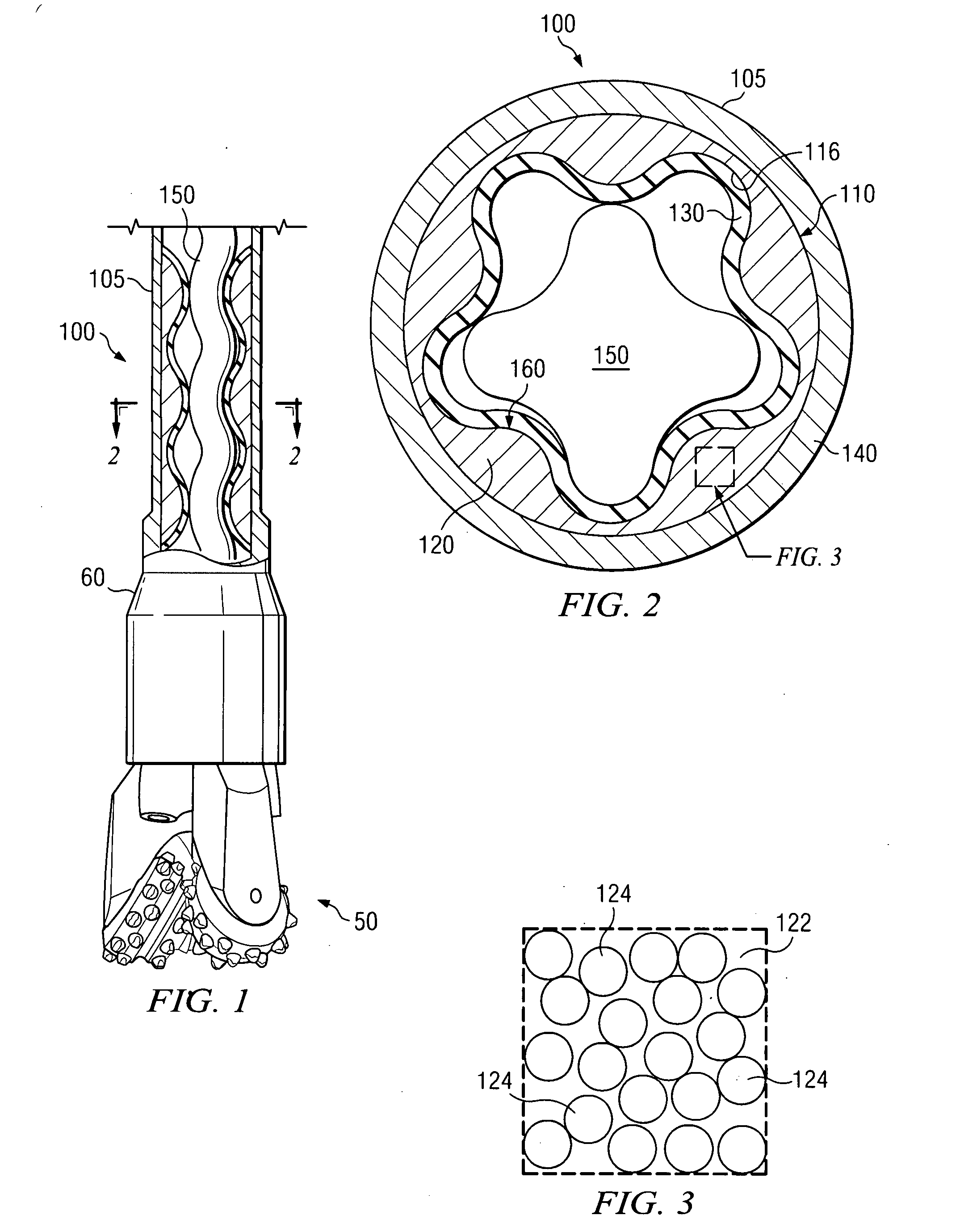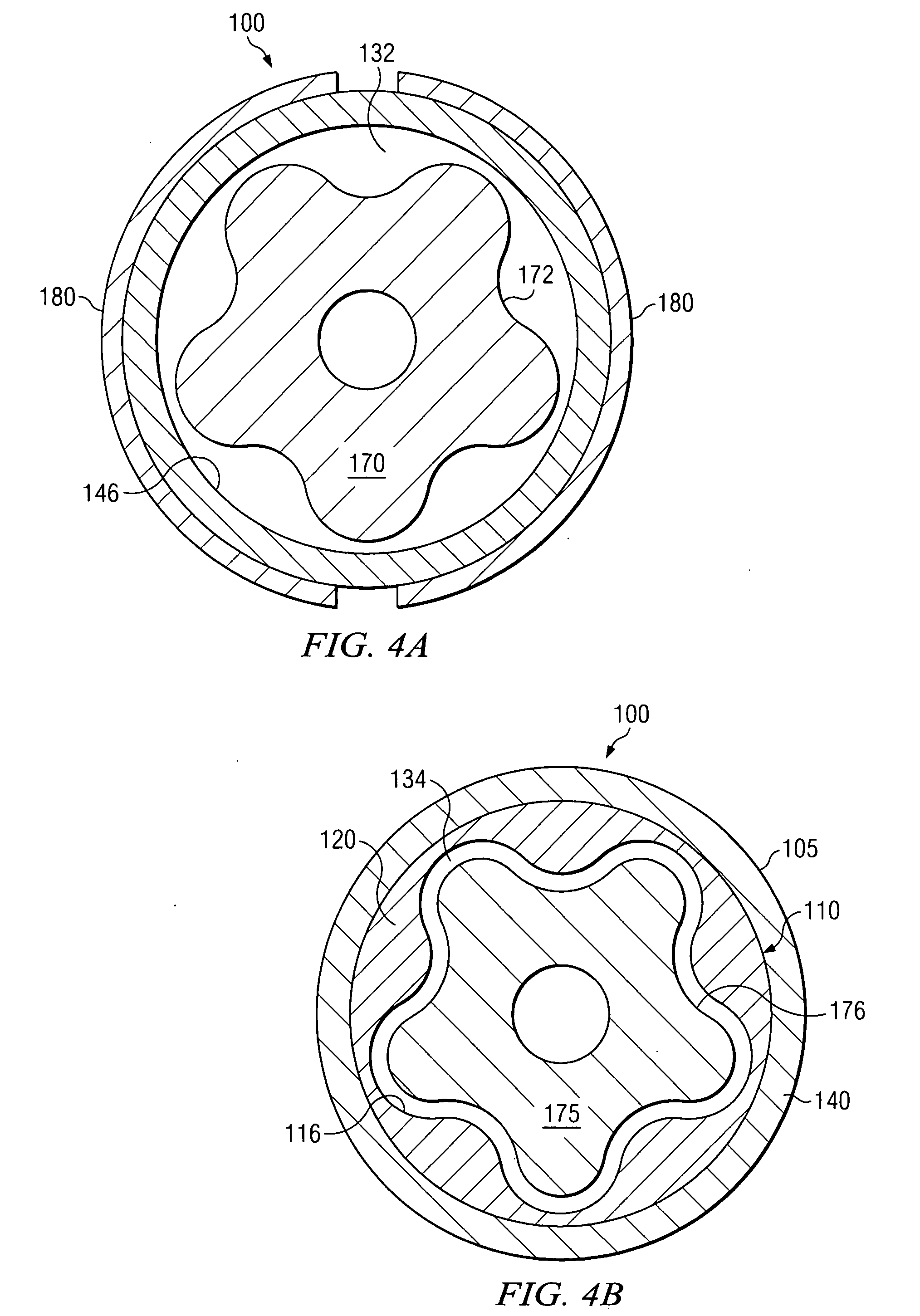Braze or solder reinforced moineu stator
a braze or solder reinforced, moineu stator technology, applied in the direction of machines/engines, manufacturing tools, liquid fuel engines, etc., can solve the problems of cracks, cavities, other types of failure in the lobe, and the elastomer portion of the conventional stator lobe is subject to considerable cyclic deflection, so as to prolong the service life and improve the torque output. , the effect of improving efficiency
- Summary
- Abstract
- Description
- Claims
- Application Information
AI Technical Summary
Benefits of technology
Problems solved by technology
Method used
Image
Examples
Embodiment Construction
[0023]FIG. 2 depicts a circular cross-section through a Moineau style power section in an exemplary 4 / 5 design. In such a design, the differing helical configurations on the rotor and the stator provide, in circular cross section, 4 lobes on the rotor and 5 lobes on the stator. It will be appreciated that this 4 / 5 design is depicted purely for illustrative purposes only, and that the present invention is in no way limited to any particular choice of helical configurations for the power section design.
[0024]With reference now to FIG. 1, one exemplary embodiment of a Moineau style power section 100 according to this invention is shown in use in a downhole drilling motor 60. Drilling motor 60 includes a helical rotor 150 deployed in the helical cavity of Moineau style stator 105. In the embodiment shown on FIG. 1, drilling motor 60 is coupled to a drill bit assembly 50 in a configuration suitable, for example, for drilling a subterranean borehole, such as in an oil and / or gas formation...
PUM
| Property | Measurement | Unit |
|---|---|---|
| particle size | aaaaa | aaaaa |
| length | aaaaa | aaaaa |
| volume percent | aaaaa | aaaaa |
Abstract
Description
Claims
Application Information
 Login to View More
Login to View More - R&D
- Intellectual Property
- Life Sciences
- Materials
- Tech Scout
- Unparalleled Data Quality
- Higher Quality Content
- 60% Fewer Hallucinations
Browse by: Latest US Patents, China's latest patents, Technical Efficacy Thesaurus, Application Domain, Technology Topic, Popular Technical Reports.
© 2025 PatSnap. All rights reserved.Legal|Privacy policy|Modern Slavery Act Transparency Statement|Sitemap|About US| Contact US: help@patsnap.com



